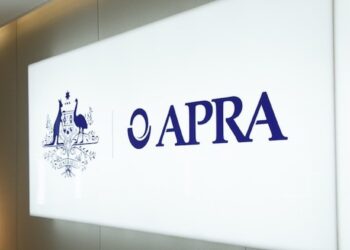ASFA has urged greater transparency and fairness in the way superannuation levies are set and spent.
The Association of Superannuation Funds of Australia (ASFA) has called for greater transparency and scrutiny in the way industry levies are set and spent by regulators, warning that the burden of these costs is ultimately borne by superannuation members, disproportionately so in smaller funds.
In a submission responding to Treasury’s proposed financial institutions supervisory levies (FISLs) for 2025–26, ASFA backed the principle that regulators like APRA and the ATO should be adequately funded but said that “all regulated entities should contribute” and that funding mechanisms must avoid distortions to competition and efficiency.
While the total proposed levies for the super sector are set to fall slightly – from $121.6 million to $112.5 million – ASFA said that when ASIC levies are included, the overall cost to the industry still hovers between $140 million and $145 million annually.
“For superannuation funds, levies are ultimately funded through administration fees charged to members’ accounts,” ASFA said, with the impact ranging from about $4 per member in large funds to $11 in small funds.
Namely, the group highlighted data from the FISLs paper showing that between 2023–24 and 2025–26, levies on a $100 billion fund (large fund) would decrease by 11 per cent, while levies on a $20 billion fund (medium fund) would rise by 2 per cent. The association said that, as a result, the levy burden is typically heavier for members of smaller funds compared to those in larger funds.
ASFA also flagged the Productivity Commission’s warning on how the proliferation of industry levies across the economy risks creating inefficiencies and productivity drag.
Levies are justifiable, ASFA said, when they address specific externalities such as poor-performing providers or systemic financial risks, but when levies are not directly tied to a market failure, their cost to the industry can outweigh any wider benefits and may deter new entrants.
“Where cost-recovery is not linked to regulation that relates to a specific externality or market failure, the cost (to industry) is more likely to outweigh any broader economic/social benefits,” it said.
“If sufficiently high, industry levies can act as a barrier to market entry – which may limit competitive dynamics and future productivity improvements.”
Additionally, it raised concern over the lack of transparency in how funding needs are determined, particularly within APRA’s share of the levy, which has risen 147 per cent over the past decade.
While acknowledging improvements in the 2025–26 paper, ASFA said “future years’ FISLs Papers should provide a more detailed disaggregation of APRA’s regulatory activities” and called on the ATO to publish more granular and frequent data on lost and unclaimed super flows to better assess program effectiveness.
Should future regulator funding shift further toward industry levies, ASFA said, a high bar must be set for justification, transparency, and impact analysis to maintain fairness and accountability.




